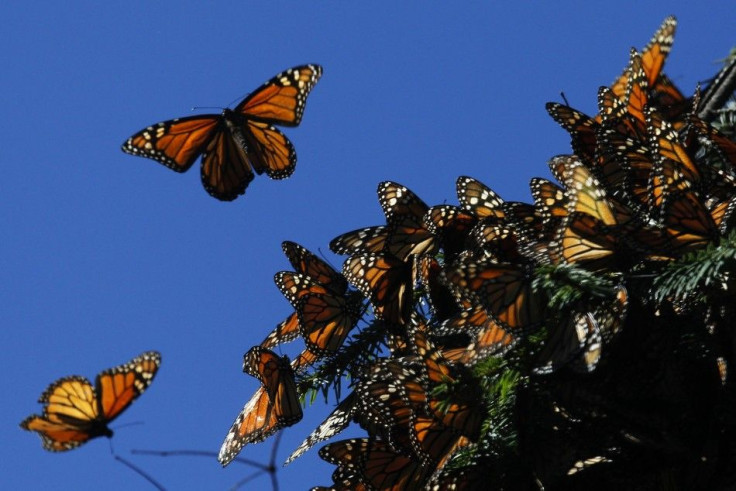Monarch Butterflies May Be On The Endangered Species List

Officials at the U.S. Fish and Wildlife Service have been reported to say that the recent decline noticed among the population of monarch butterflies may necessitate the species to be included in the U.S. Endangered Species Act list. The monarch species are believed to be rapidly disappearing due to the loss of its natural habitat.
The monarch butterflies are supposedly heavily dependant on a particular kind of plant, namely the milkweed plant, for their reproduction process. The milkweed plant is reported to have been destroyed in huge numbers due to increased manufacturing of genetically modified crops and herbicides that destroy local vegetation, especially milkweed plants.
Recent studies have shown that the monarch butterfly population has suffered a loss of around 90 percent in the past two decades. The Xerces Society for Invertebrate Conservation reports that the monarchs are generally known to use milkweed plants for hatching eggs and nourishing the delicate larvae.
The Xerces Society, in collaboration with a few others, have filed a petition that requests the U.S. federal government to protect the monarch butterfly species. There seems to be a very high possibility of the petition being taken seriously by the government. Talking about the petition filed, the Fish and Wildlife Service stated, "presents substantial information indicating that listing may be warranted."
University of Chicago ecologist Marcus Kronforst is of the opinion that the migration pattern of the monarchs has also undergone a drastic change. He estimated that just about 35 million monarch butterflies migrated to Mexico in 2013. This number is alarmingly low when compared to the 1 billion that was recorded in 1996.
The monarchs are said to be treasured for their delicate beauty. Regional wildlife biologist Beth Waterbury, who also works for the Idaho Department of Fish and Game, stated, "Almost every person I've talked to about monarchs has expressed a deep love and admiration for them that was often formed in childhood."





















